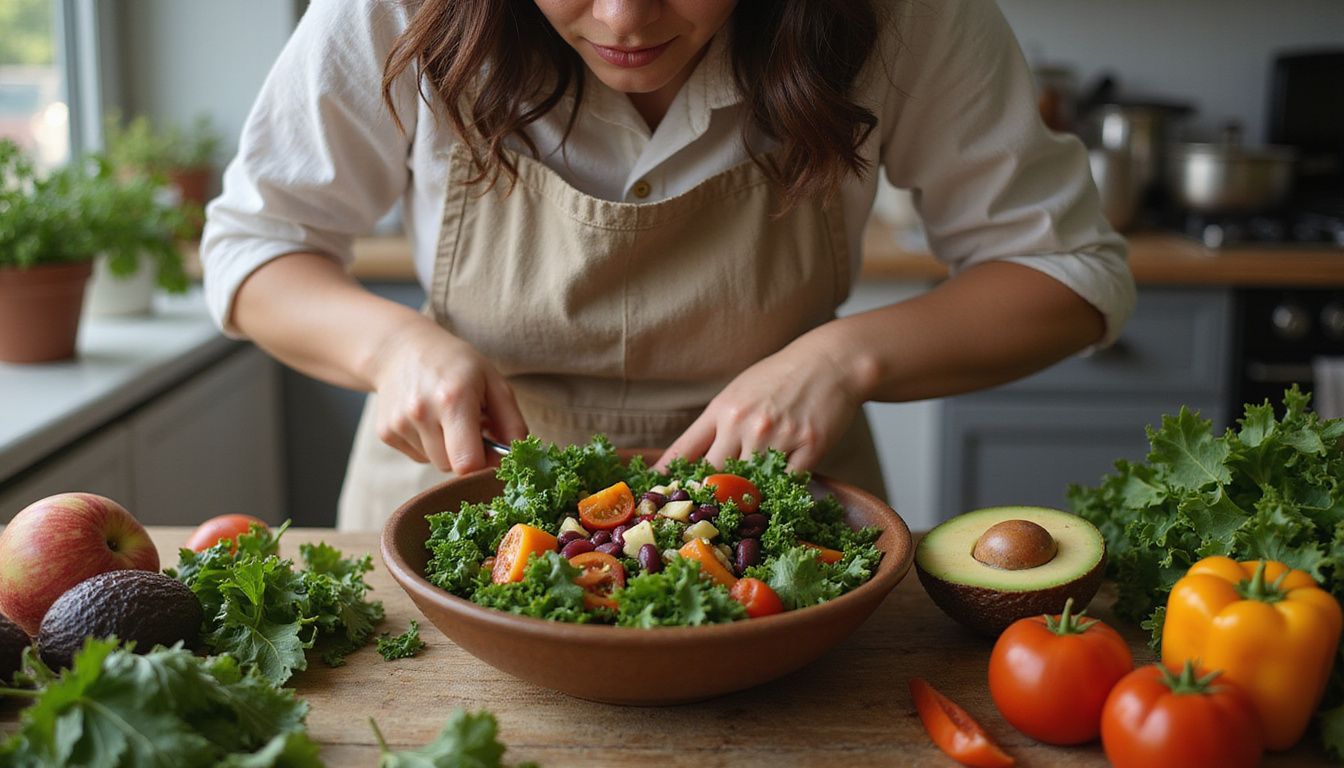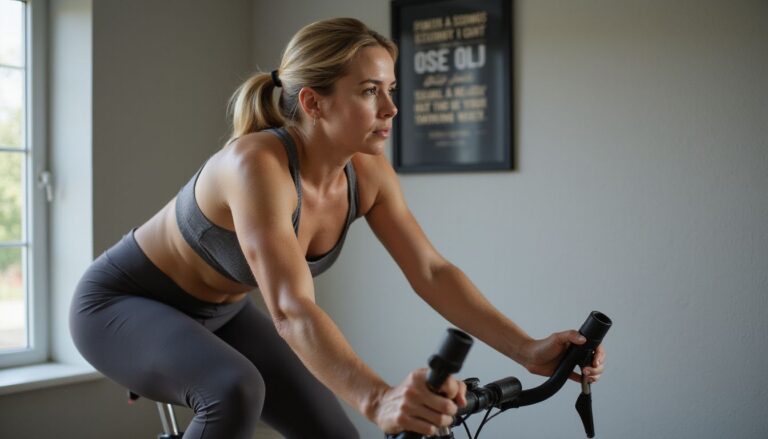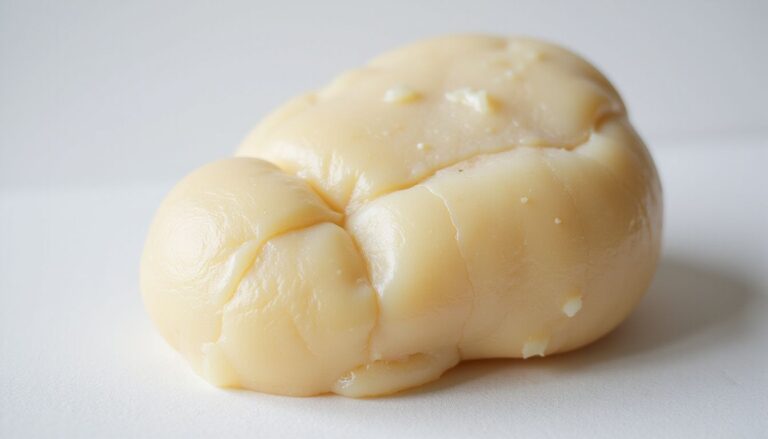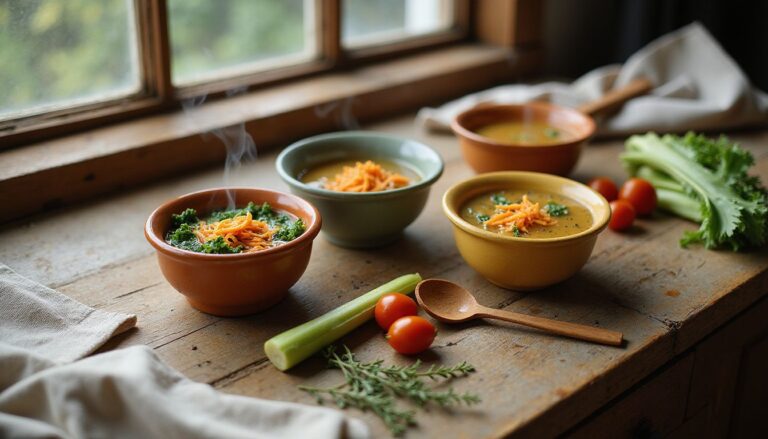Boost Your Health With Nutrition Iron: Best Sources, Vitamin C Pairing, And Dietary Guidelines
Our Nutrition Assistant AI Suite will transform your body. You will lose fat, get toned, and build muscle. Gain confidence and optimal health.
Feeling tired or weak can be a sign of low iron. Iron is an essential mineral your body uses to build healthy red blood cells and prevent anemia. This guide highlights key food sources of iron, shows how vitamin C improves iron absorption, and outlines simple dietary guidelines for different life stages.
Learn which everyday foods can lift your energy and support long-term health.
Key Takeaways
- Adult men need 8 mg of iron daily. Women ages 19 to 50 need 18 mg. Pregnancy raises needs to 27 mg per day (Dietary Guidelines for Americans).
- Pair non-heme iron foods, like beans or spinach, with vitamin C foods, such as oranges or bell peppers, to raise absorption by up to 30%.
- The CDC reports about 10% of women in the United States have low iron stores, which increases the risk of iron deficiency anemia.
- Phytates in whole grains and legumes, tannins in tea and coffee, and calcium from dairy can lower non-heme iron absorption by as much as 60%.
- Taking too much iron can harm organs. Talk with a clinician before using supplements, especially if you notice vomiting, rapid heartbeat, or liver problems.
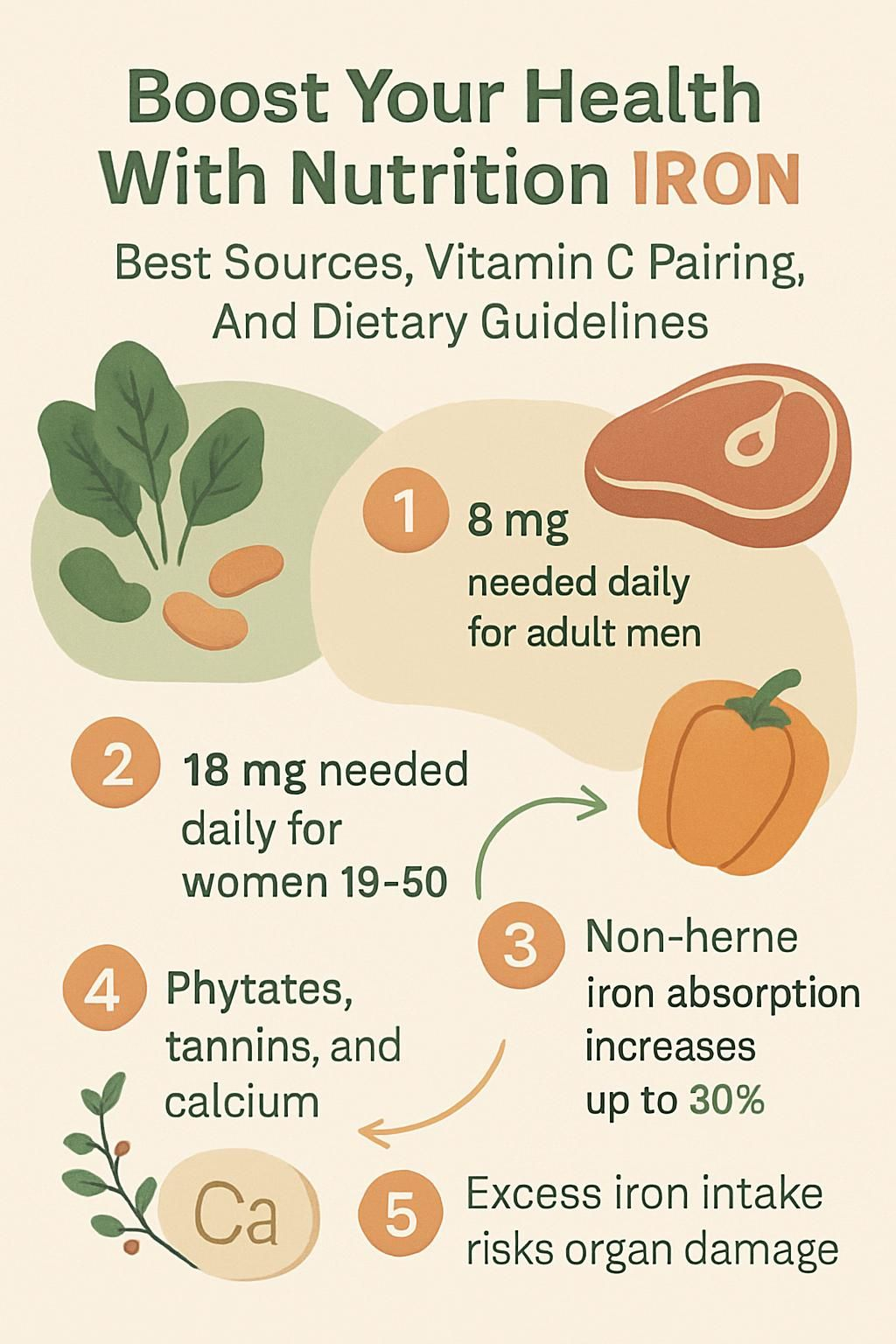
Essential Role of Iron in the Body
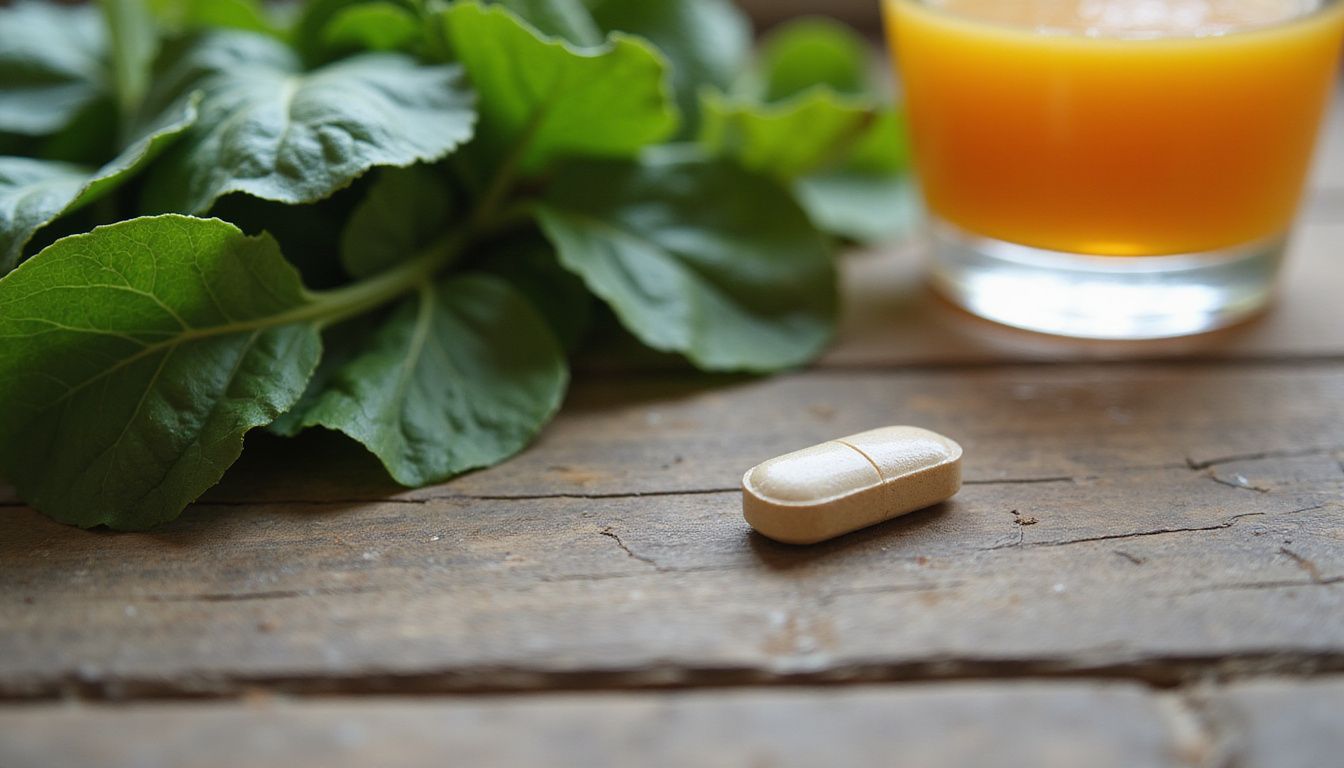
Iron works like an oxygen shuttle for your body. It helps you move oxygen to every cell so your organs can perform well.
What are the key functions of iron in human health?
Iron is needed to make hemoglobin, the oxygen-carrying protein in red blood cells. With enough hemoglobin, oxygen reaches your brain, muscles, and other tissues.
Iron also supports myoglobin, a protein that stores oxygen in muscles. Your immune cells use iron to fight infections and recover from illness.
This mineral fuels energy production and helps with DNA synthesis. Children and teens need steady iron to support learning, growth, and brain development.
During pregnancy, needs rise to support the placenta and the growing baby. Many people notice fatigue when iron is low. Choosing iron-rich food and pairing it with vitamin C can improve absorption and support steady energy.
What are the risks of having too little iron?
Too little dietary iron can lead to iron deficiency. If it becomes severe, your body cannot make enough healthy red blood cells, which causes iron deficiency anemia.
Common signs include tiredness, weakness, and trouble concentrating. Pregnant people and growing children are at higher risk, since their needs are greater.
Pale skin, headaches, or shortness of breath can appear when intake is too low. Severe deficiency can weaken immune defenses and slow recovery from illness.
According to the Centers for Disease Control and Prevention, about 10 percent of women in the United States have low iron stores. Those at higher risk include people with heavy menstrual bleeding, vegetarians and vegans, infants and young children, and frequent blood donors.
Low dietary iron intake can lead to reduced cognitive performance in children.
Iron Intake Recommendations
Your iron needs change with age, sex, and health status. The Dietary Guidelines for Americans and the Food and Nutrition Board provide targets that help you plan your meals.
How much iron do men need daily?
Men ages 19 to 50 need about 8 mg of iron per day. This amount supports normal red blood cell production and muscle function.
Most men can meet this goal through a balanced pattern that includes good sources of iron such as lean beef, poultry, seafood, beans, and fortified grains.
Combining heme iron from animal foods with non-heme iron from plant foods helps you meet daily targets. Adding vitamin C to plant meals improves iron absorption from vegetables and grains.
Iron needs differ for other groups. Women and pregnant people require higher amounts.
How much iron do women and pregnant individuals need daily?
Women ages 19 to 50 need about 18 mg of iron each day. During pregnancy, needs increase to 27 mg per day due to the rapid growth of blood volume and the developing baby.
Monthly blood loss raises iron needs for many women. If intake falls short, iron deficiency anemia may develop.
During my pregnancy, I focused on lean meat, beans, and iron-fortified cereal. My clinician also suggested a prenatal vitamin with iron plus vitamin C to improve absorption from plant foods.
Eating enough iron during pregnancy can lower the risk of preterm birth and low birth weight, says the Centers for Disease Control and Prevention.
If you are pregnant, or planning to be, review your diet and potential supplement needs with your healthcare provider. This is vital if you eat mostly plant foods or have heavy periods.
What are the iron requirements for children and infants?
Iron supports growth, strong bones, and brain development. For the first six months, most full-term infants get enough iron from breast milk or infant formula.
The recommended intake is 0.27 mg per day from birth to 6 months. From 7 to 12 months, needs rise to 11 mg per day as growth speeds up.
Children ages 1 to 3 years need about 7 mg daily. Children ages 4 to 8 years should aim for 10 mg daily.
Young children absorb non-heme iron less efficiently. Once solids begin, offering heme iron, such as poultry or fish, can help. Pairing plant foods with vitamin C supports absorption and lowers the risk of iron deficiency anemia.
Pediatricians may check ferritin or hematocrit if intake seems low. Early signs are easy to miss, so regular well visits matter.
Summary Table:
| Age Group | Recommended Daily Iron Intake (mg) | Major Sources |
|---|---|---|
| Infants (0 to 6 months) | 0.27 | Breast milk or formula |
| Infants (7 to 12 months) | 11 | Iron-fortified cereal, pureed meats |
| Children (1 to 3 years) | 7 | Meat, beans, fortified bread |
| Children (4 to 8 years) | 10 | Poultry, legumes |
Aim for a variety of animal and plant sources. Add vitamin C foods to help meet total needs during these important years.
Different Forms of Iron in Foods
Dietary iron comes in two types. Heme iron is found in animal foods. Non-heme iron is found in plants and fortified foods.
What foods provide heme iron?
Red meat, poultry, and seafood are the best sources of heme iron. Beef liver is near the top, with about 5 mg per 3-ounce serving. Chicken, turkey, and pork provide smaller amounts.
Clams, oysters, and sardines also supply generous heme iron. Your body absorbs heme iron more efficiently than non-heme iron.
For many people, a few servings of lean red meat or shellfish each week help maintain healthy iron stores and reduce the risk of iron deficiency anemia. I felt my energy improve after adding lean beef twice a week during a busy season.
What foods provide non-heme iron?
Beans, lentils, tofu, nuts, and seeds are reliable non-heme iron sources. Dark leafy greens, such as spinach and kale, also contribute. Whole grains like quinoa, brown rice, and iron-fortified cereals can help close gaps.
Many flours and packaged foods are fortified with iron, which supports intake for vegetarians and vegans. Pairing these foods with vitamin C raises absorption and can improve energy over time.
For example, serve lentil soup with sliced bell peppers or add strawberries to oatmeal. Simple pairing choices can make a clear difference.
Top Iron-Rich Foods
Balanced meals can deliver plenty of iron. Knowing which foods offer heme or non-heme iron helps you choose options your body can use well.
Which animal-based foods have the most iron?
Beef liver leads the list with about 5 mg of iron per 3-ounce serving. Oysters and clams are also rich, and six medium oysters can provide about 4 mg.
Beef steak typically has 2 to 3 mg per serving. Dark turkey meat offers around 2 mg. Egg yolks and sardines supply smaller but useful amounts.
A clinician once advised me to include lean beef after my ferritin came back near the low end. Within weeks, my energy felt steadier.
Animal foods provide iron in a form that is easy to absorb. That helps your body deliver iron to the bone marrow, where new blood cells form.
Which plant-based foods are highest in iron?
Cooked lentils give about 6.6 mg per cup. Half a cup of firm tofu provides roughly 3.3 mg. One ounce of pumpkin seeds adds about 3 mg, while half a cup of cooked spinach contributes around 2 mg.
Quinoa, kidney beans, and blackstrap molasses also support your daily intake. Nuts like cashews and almonds, plus oats and fortified cereal, can fill in the rest.
Combine these foods with vitamin C to improve absorption and help prevent iron deficiency anemia, especially if you avoid meat.
What are common iron-fortified foods?
Many cereals contain added iron, and some brands meet 100% of daily needs in one serving. Enriched bread and pasta supply extra iron through food fortification.
Infant formula and baby rice cereal often include iron to support growth. Oatmeal is another easy option for children.
Some plant-based milks, such as soy or oat, include added minerals and iron. Nutrition bars and shakes geared to vegetarian diets may also provide extra iron. These products make it easier to meet your goals if you limit animal foods.
Boost Iron Absorption with Vitamin C
Vitamin C acts like a helpful key for non-heme iron. It unlocks more iron from plant foods so your body can use it.
Which foods are rich in vitamin C?
Oranges, strawberries, kiwi, and guava are top choices. A medium orange provides more than 70 mg of vitamin C. One cup of strawberries offers about 85 mg.
Red bell peppers are powerful too. Half a cup can supply more than 90 mg. Broccoli and Brussels sprouts add up to 50 mg per half-cup serving.
Include at least one vitamin C food with plant sources of iron like beans or spinach. I felt better results from my iron pills after adding citrus at breakfast.
Use this pairing to boost iron from food. Only use high-dose supplements if your healthcare provider recommends them.
How does vitamin C improve iron absorption?
Vitamin C changes non-heme iron into a form that is easier for your gut to absorb. Eating strawberries or bell peppers with beans or greens can increase the iron you take in at that meal.
This pairing supports healthy transferrin saturation, which reflects how iron travels in your blood. It can also help maintain stable iron stores.
If you rely mainly on non-heme iron because you are vegetarian or vegan, this approach helps protect against low iron levels and related symptoms.
Common Inhibitors of Iron Absorption
Some foods and drinks slow iron absorption. A few small changes to timing and prep can protect your intake.
How do phytates in grains and legumes affect iron absorption?
Phytates, also called phytic acid, are natural compounds in grains, legumes, nuts, and seeds. They bind to minerals in the digestive tract, which makes non-heme iron harder to absorb.
Brown rice, beans, whole wheat bread, and lentils are common sources. Research shows phytic acid can reduce non-heme iron absorption by up to 50% in a single meal.
Two easy fixes help. First, add vitamin C foods to meals with beans or whole grains. Second, use soaking, sprouting, or fermenting methods to lower phytate levels before cooking.
How do tannins in tea and coffee impact iron absorption?
Tannins in tea and coffee can reduce the absorption of non-heme iron from plant foods. Drinking black tea with meals may cut absorption by up to 60%, based on clinical studies.
Tannins bind to non-heme iron in the stomach and limit its entry into the bloodstream. Drinking tea or coffee within an hour before or after meals can have this effect.
If you are at higher risk of iron deficiency, try moving tea or coffee away from iron-rich meals. This small change helps your body use more of the iron you eat.
What effect does calcium from dairy have on iron absorption?
Calcium can interfere with iron absorption when eaten at the same time. Milk, cheese, and yogurt may reduce how much iron you absorb from both heme and non-heme sources.
Consider separating high-calcium foods from high-iron meals by a few hours. For example, have dairy as a snack later if you took an iron pill at breakfast.
This timing helped me improve my hemoglobin during my teen years. It is a simple habit that supports steady iron levels without giving up dairy.
Health Benefits of Optimal Iron Levels
Healthy iron levels help your body deliver oxygen, support hormones, and recover from daily stress.
How does iron prevent anemia?
Iron allows your body to build hemoglobin. Without enough iron, your red blood cells cannot carry the oxygen your tissues need, which leads to iron deficiency anemia.
Common signs include weakness, fatigue, and shortness of breath. Women need up to 18 mg per day due to menstrual blood loss. Pregnant people and blood donors often need extra support.
After donating blood, my clinician suggested iron plus vitamin C for a short period. Better meals and that plan improved my energy and focus within weeks.
Your body also stores iron as ferritin in the liver and spleen for future needs. Too much iron can build up and strain organs, so stick to recommended amounts unless your provider advises otherwise.
How does iron improve energy and reduce fatigue?
Iron helps red blood cells carry oxygen from your lungs to your muscles and brain. Those tissues use oxygen to make energy for daily tasks and exercise.
Low iron means less hemoglobin, less oxygen delivery, and more fatigue. People with heavy periods, growing children, and those with chronic kidney disease face higher risk.
Eating iron-rich food and adding vitamin C can lift levels gradually. That often brings back normal energy.
How does iron support immune function and oxygen transport?
Iron supports the growth and activity of white blood cells that fight infection. It also drives erythropoiesis, the process that produces new red blood cells.
With enough iron, hemoglobin carries oxygen from the lungs to every cell. Low iron can weaken immune responses and slow recovery after illness.
Keeping iron in a healthy range supports strong immunity and steady oxygen supply to all tissues.
Populations Prone to Iron Deficiency
Some groups have higher iron needs or greater losses. Extra attention to diet and intake can prevent problems before they start.
Why are pregnant women at risk for iron deficiency?
During pregnancy, blood volume expands and tissues grow quickly. Your body needs much more iron to support both you and the baby.
Daily needs often rise to about 27 mg. Although the body absorbs iron more efficiently in pregnancy, demand can still exceed intake, especially without iron-rich meals.
Many clinicians recommend iron tablets if lab tests show low stores. If heavy periods or limited intake lowered your iron before pregnancy, talk with your provider early.
Why are infants and young children vulnerable to iron deficiency?
Rapid growth raises iron needs in babies and toddlers. Breast milk has low iron, so after about six months, babies need new sources like fortified cereal, pureed meat, or mashed beans.
Non-heme iron from plants is harder to absorb than heme iron from animal foods. Picky eating or too much milk can also crowd out iron-rich foods.
Without enough iron, anemia can develop and slow brain development. Pair iron foods with vitamin C to improve absorption during this stage.
Why do women with heavy menstrual bleeding need more iron?
Heavy menstrual bleeding causes greater monthly iron loss. That lowers the iron available for making red blood cells and carrying oxygen.
You may feel tired, weak, or short of breath if you do not replace those losses. After I noticed fatigue during my cycle, tests showed low iron. More iron-rich foods and vitamin C with meals helped restore my energy.
Why do vegetarians and vegans face iron deficiency challenges?
Vegetarian and vegan diets rely on non-heme iron, which the body absorbs less efficiently than heme iron. Phytates in grains and legumes can further reduce absorption. Tannins in tea and high calcium intake may add to the problem.
Raising iron-rich plant foods and pairing them with vitamin C makes a big difference. For instance, eat oranges with spinach or add tomatoes to bean dishes.
If you donate blood or have heavy periods, tracking intake with a nutrition app can help maintain healthy levels and reduce the risk of iron deficiency anemia.
Why are frequent blood donors at risk for low iron?
Each pint of donated blood removes about 200 to 250 mg of iron from your body. It takes time and good intake to rebuild those stores.
If you donate three or more times a year, you may need higher intake or a short-term supplement plan. After I donated twice in two months, I felt dizzy and tired for weeks. Testing confirmed low iron.
Donating helps others, but your health matters too. Plan iron-rich meals before and after donations to protect energy and focus.
Recognizing Signs of Iron Deficiency
Your body often gives early warnings. Paying attention helps you act sooner and avoid more serious problems.
What fatigue and weakness symptoms indicate iron deficiency?
Ongoing tiredness, even after a good night’s sleep, can signal low iron. Climbing stairs or carrying groceries may feel harder because muscles get less oxygen.
Fatigue may build over days or weeks and not improve with rest^1. You might also find it harder to focus at school or work. As a regular donor, I once felt drained walking short distances until I increased iron-rich foods like spinach and nuts.
Fatigue paired with weakness is a common sign that daily iron intake is too low for healthy cell activity.
^1 Centers for Disease Control and Prevention (CDC), “Iron Deficiency – Signs & Symptoms,” 2021.
How do pale skin and brittle nails signal low iron?
Pale skin and brittle nails are also red flags. Iron supports hemoglobin, which brings oxygen to your cells. When iron is low, less oxygen reaches tissues, and your skin may look paler, especially on the face or inside the lower eyelids.
Nails can become thin, break easily, or curve like a spoon, which is called koilonychia. Eating foods with iron, such as lean meats, spinach, or fortified cereal, can help protect your skin and nails.
What dizziness and shortness of breath symptoms relate to iron deficiency?
Low iron often brings dizziness or lightheadedness, especially when standing up or climbing stairs. Your body needs iron to make hemoglobin, the protein that carries oxygen in blood.
Shortness of breath is another sign. Normal tasks may leave you winded because your heart works harder to deliver oxygen. These symptoms can be stronger during growth or pregnancy. Watch for pale skin or brittle nails alongside these signs.
Dangers of Excessive Iron Intake
Too much iron can build up in tissues and harm organs. Spotting warning signs early protects long-term health.
What are the signs of iron toxicity?
Iron toxicity can cause stomach pain, vomiting, and diarrhea. Some people notice a metallic taste, severe fatigue, or a fast heartbeat. Joint pain or bronze-colored skin may appear as iron builds up.
Serious cases can injure the heart or liver. If confusion or trouble breathing occurs after taking high-dose supplements, seek medical care right away. I once had intense stomach cramps after doubling a dose by mistake, which taught me to follow directions carefully.
How can too much iron affect liver and heart health?
Excess iron can damage cells in the liver and heart. Over time, this can lead to scarring in the liver, called fibrosis, and may progress to cirrhosis. The heart can develop rhythm problems or weakened muscle.
People with hereditary hemochromatosis or those who get many transfusions face higher risk. If you have these risks, work with your healthcare provider and avoid extra iron unless prescribed.
Strategies for Achieving Iron Requirements
A balanced plate, smart pairings, and good timing help your body use more of the iron you eat.
Why is a balanced diet important for iron intake?
Your body needs a mix of nutrients to absorb and use iron. Vitamin C, found in citrus and berries, helps draw more non-heme iron from plant foods.
Whole foods like nuts, seeds, and grains bring fiber and minerals. Some also contain phytates that can lower absorption. Balancing meals with vitamin C helps offset that effect.
Including both animal and plant sources improves your chances of meeting daily targets. This approach supports healthy blood and reduces the risk of both deficiency and overload.
How can combining iron with vitamin C help absorption?
Pair iron-rich foods with vitamin C to increase absorption. Vitamin C changes non-heme iron from plants and fortified products into a form your gut absorbs more easily.
Try a spinach salad with orange slices, or drink orange juice with fortified cereal. Even 25 to 100 mg of vitamin C at a meal can double non-heme iron absorption in studies.
Bell peppers, strawberries, oranges, and kiwi are great options. After I started this pairing with plant-based meals, my lab results and daily energy improved over time.
When should you avoid foods that inhibit iron absorption?
Some foods get in the way of absorption if eaten with iron-rich meals. Phytate-rich foods like whole grains, nuts, and legumes can block non-heme iron.
Tea and coffee add tannins that lower absorption. Dairy products supply calcium, which also competes with iron. If you take an iron pill at breakfast or eat an iron-focused meal, skip tea, coffee, and milk during that time.
Shifting my morning tea to midmorning helped my energy and lab numbers. Spacing these items gives your body a better shot at using the iron you consume.
Guidelines for Iron Supplementation
Supplements can fill a gap when diet is not enough. Always speak with a professional before starting, since the right amount depends on your health and labs.
What types of iron supplements are available?
Common options include ferrous sulfate, ferrous gluconate, and ferrous fumarate. These pills raise iron levels effectively, though some people notice stomach upset or constipation with certain types.
If swallowing pills is hard, liquid iron or chewables may be easier. When absorption through the gut is poor or needs are very high, clinicians may use intravenous iron.
Choose the form and dose with your healthcare provider. The goal is to lift iron safely while supporting red blood cell production.
When should you consult a healthcare provider about supplements?
Talk with your provider if you have chronic conditions such as heart or liver disease. Also seek advice if you notice unexplained fatigue, pale skin, frequent infections, or other signs of imbalance.
Children and pregnant people need careful dosing based on growth and pregnancy needs. If your diet is low in animal foods, testing can confirm whether you need a supplement.
Lab checks help you get enough iron without risking toxicity. Avoid self-diagnosing or high-dose plans without medical guidance.
Conclusion
Healthy iron levels support energy, focus, and oxygen delivery throughout the body. Lean into smart food choices, then pair plant sources of iron with vitamin C to boost iron absorption from each meal.
Choose a variety of foods, including reliable sources of iron from both animals and plants, plus fortified grains. Time tea, coffee, and dairy away from iron-rich meals to limit blockers and protect your iron intake.
Before taking an iron supplement, speak with a healthcare professional. The right plan helps you meet your needs without taking too much iron. With steady habits and thoughtful pairings, you can protect against iron deficiency anemia and feel your best each day.
FAQs
1. What role does iron play in cell and tissue health?
Iron is vital for cell function and tissue growth. It helps red blood cells carry oxygen to body tissues, supporting energy and organ health. Without enough iron, cells and tissues may not work well, leading to fatigue and weakness.
2. Which foods are the best sources of iron for nutrition?
Red meat, poultry, and seafood are rich sources of iron. Plant-based options include nuts, beans, and leafy greens. Nuts, such as almonds and cashews, offer iron and other nutrients that support cell and tissue health.
3. How does vitamin C help with iron absorption?
Vitamin C improves iron absorption from plant foods. Eating fruits like oranges or strawberries with iron-rich foods increases the dose of iron your body can use. This pairing helps cells get the iron they need for healthy function.
4. What are the dietary guidelines for iron intake?
The recommended daily dose of iron depends on age and gender. Adults usually need 8 to 18 milligrams per day. Eating a balanced diet with iron-rich foods and vitamin C sources supports cell health, tissue repair, and overall well-being.

